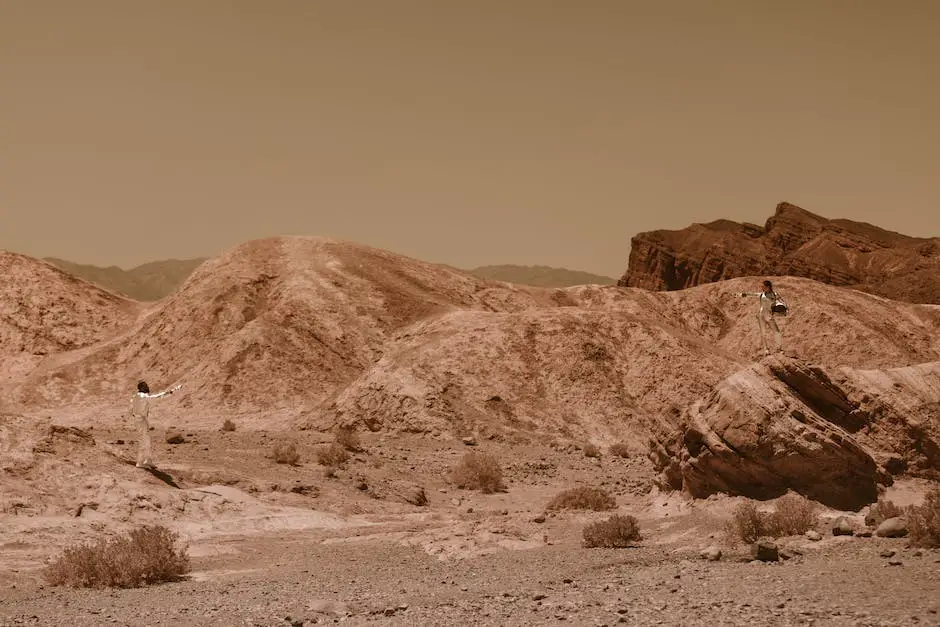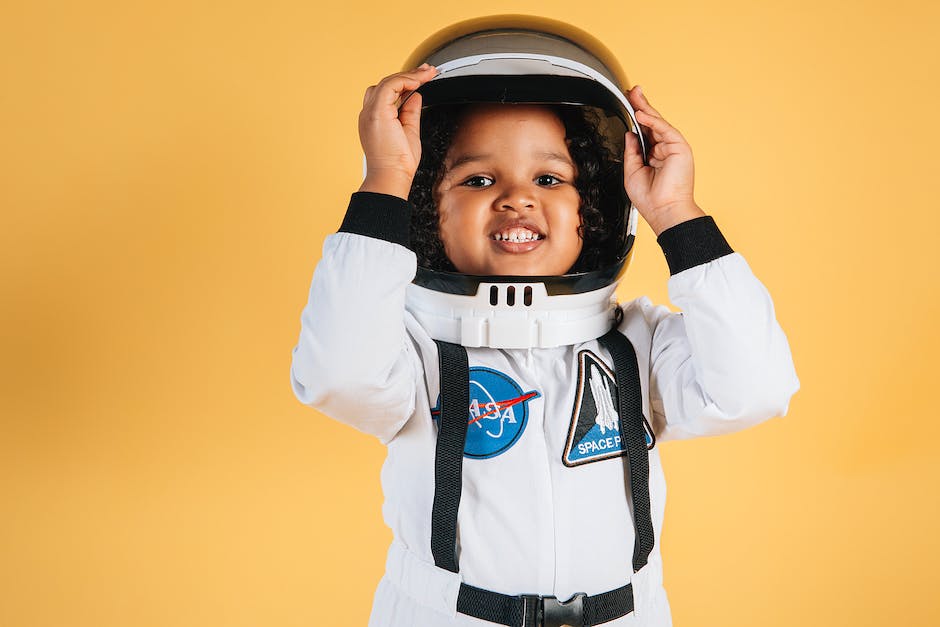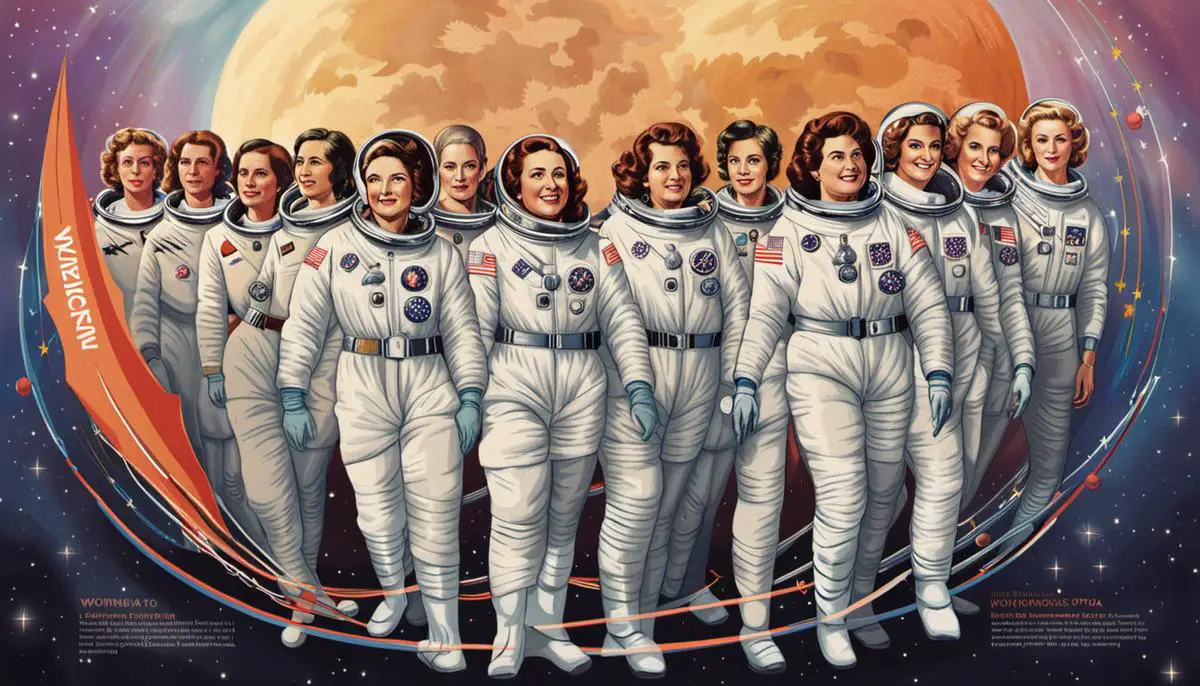Space exploration, a realm once exclusively dominated by men, has dramatically transformed over the past several decades to create space – literally and figuratively – for women. This evolution, shaped by historical events, emerging ideologies, and relentless individuals, did not happen overnight. Amid the intense global rivalry, the Cold War silently wrote another narrative – women’s right to the stars. Pioneering female astronauts faced towering hurdles, both from within NASA’s initial policies and societal attitudes, to set precedents in the hope-dappled domain of space. Through this journey, from obscurity to the limelight, one figure remains pivotal – the very first American woman scheduled for an Apollo flight. Her struggles, triumphs, and legacy form an integral part of this fascinating narrative.
Contents
Historical Background of Women in Space Missions
Resistance to Women in Space
In the early years of space exploration, women were largely excluded. NASA’s initial astronaut selection criteria required candidates to be military test pilots – a vocation reserved exclusively for men at the time. This policy was grounded in the traditionally gendered division of labor, viewing space travel as an extension of military and experimental flight, areas that were male-dominated. Thus, despite the rise of feminism and civil rights movements during the 1960s, the idea of women in space met significant resistance.
Mercury 13 and the First American Woman Candidate
Despite this, a group of American women, known as the Mercury 13, underwent the same physical testing regimen as the Mercury 7, NASA’s first group of astronauts. Among them was Jerrie Cobb, the first woman in the U.S. to undergo astronaut testing. The Mercury 13’s testing showed that women could indeed meet and exceed the physical requirements for spaceflight, but they were barred from further consideration on the basis of NASA’s strict test pilot requirement.
The Soviet Union’s Role in Women’s Space Participation
Contrasted with the United States, the Soviet Union in the early days of space exploration was promoting the idea of sending a woman to space as part of their broader political and ideological goals. In 1963, Valentina Tereshkova became the first woman in space, which fueled the debate in the US about women’s capabilities and rights in space.
NASA’s Policy Change and Women’s Inclusion
Amid changing social attitudes, mounting public and political pressure, and the Soviet Union’s maneuvers, NASA opened up its astronaut corps to women in 1978. Despite this milestone, no American woman was ever scheduled for the Apollo program, which ended in 1972. The first American woman in space, Sally Ride, flew on the Space Shuttle Challenger in 1983, over a decade after Tereshkova. Although women’s participation in space missions was a reality, the doctrine had been firmly established: it would be men, not women, going to the Moon during the Apollo program.
The Influence of Pioneering Women on the American Space Program
The trail-blazed by the early women astronauts showcased their biological resilience in the harsh environment of space, and equally important, the institutional prejudices they had to surpass. These women left a legacy for future generations, breaking barriers and demonstrating that women could not just endure, but flourish in space. However, a significant milestone remains untouched – an American woman has not yet landed on the moon. NASA plans to address this with its impending Artemis program, with an objective of landing “the first woman and the next man” on the Moon by 2024.

The Feminist Movement and the Space Race
The Interplay of The Feminist Movement and The Space Race
The era of the 1960s and ‘70s brought about a resurgence of feminism, often referred to as Second Wave Feminism. During this time, women across America were advocating for equal rights, particularly within the workforce. NASA, as part of the public sector, was not immune to these demands for equality, sparking a more vigorous discussion about gender equity within the space program.
The feminist movement during this period played a pivotal role in challenging societal stereotypes surrounding women’s roles and abilities. This wave of feminism significantly influenced NASA to expand its astronaut recruitment to encompass women. Through persistent activism and advocacy, the feminist movement underscored the importance of dismantling gender bias and promoting diversity. It was this pressure that catalyzed the decision to welcome women into the hitherto male-dominated space program.
NASA’s Decision to Recruit Women
The Apollo program was a significant milestone in NASA history. However, this program, like many others in the realm of science and technology, was initially limited to male astronauts. It wasn’t until the 1970s that NASA made the groundbreaking decision to bring women onboard.
This decision was influenced by several factors, including the pressure of the feminist movement advocating for gender equality and the requirements of the new space vehicle Apollo’s missions. The first woman astronaut selected for astronaut training was Jerrie Cobb in 1961 as part of a privately-funded project; however, her program was canceled, and it wasn’t until 1978, a few years after the end of the Apollo program, that NASA formally accepted its first female astronaut class. Although no American woman flew during the Apollo program, their efforts and those who championed for their inclusion paved the way for women’s involvement in future missions.
Social Reception of Women in NASA
As could be expected, this groundbreaking shift in NASA’s recruitment parameters sparked a diverse range of reactions. While many celebrated the inclusion of women in space missions as a significant step forward in gender equality, others were hesitant or downright opposed. The societal reception often followed the fault lines of contemporary thought about gender roles and capabilities, with many critics citing physical, psychological, and societal factors as reasons for women’s exclusion.
Gender Dynamics Transformed within NASA
The incorporation of women into the astronaut corps greatly transformed the gender dynamics within NASA. As women embarked on their journey into space, they infused the astronaut corps with a plethora of diverse perspectives, skills, and experiences, enriching the corps both intellectually and experientially. Furthermore, this gradual inclusion redefined and challenged the existing gender norms within the organization.
The introduction of women in NASA didn’t just symbolize a victory for the feminist movement, but it also initiated a gradual cultural shift within the organization. Pioneering women astronauts such as Sally Ride – the first American woman to journey into space in 1983 aboard the space shuttle Challenger – became role models and trailblazers for future astronauts and engineers. Despite the fact that total gender equality is yet to be fully realized, significant strides continue to be made.

Profile of the First Scheduled Woman
Judith Resnik: The First Woman Chosen for Apollo
Judith Arlene Resnik, an esteemed aerospace engineer and astronaut, made history when she was selected among the first group of female astronauts by NASA in 1978. Born on April 5, 1949, in Akron, Ohio, she demonstrated an extraordinary knack for science and mathematics from her early years. Resnik completed her bachelor’s degree in Electrical Engineering from Carnegie Mellon University and subsequently obtained a Ph.D. in Electrical Engineering from the University of Maryland.
Before her engagement with NASA, Resnik had a significant career at RCA as a design engineer and contributed greatly to the U.S. National Institutes of Health as a biomedical engineer. Her commendable accomplishments kept building up and consequently, choosing to become an astronaut seemed like a natural step forward for her.
Resnik’s Journey in NASA
Resnik underwent rigorous training after being selected as an astronaut candidate by NASA as part of its first class of female astronauts. There was a grueling 1-year training and evaluation period, during which candidates underwent various physical, mental, and technical challenges. She officially became a NASA astronaut in August 1979.
Despite the male-dominated nature of the field, Resnik showcased excellent problem-solving skills, technical proficiency, and dedication, earning respect from her colleagues and superiors alike. After her training, Resnik served as a mission specialist on the maiden voyage of Space Shuttle Discovery (STS-41-D) in 1984, making her the second American woman to travel to space. She orbited the Earth 96 times during this mission and logged 144 hours in space.
Historical Impact and Legacy
Judith Resnik, a renowned astronaut, was slated to embark on what would have been a pivotal Apollo mission, which would have made her the first American woman in such a role. However, the conclusion of the Apollo program in 1972 precluded this from happening. Undeterred, Resnik pushed forward and carved out a significant place in the annals of space exploration. Her admission into NASA’s astronaut corps and her trek into space made her an icon, breaking boundaries for women in the aerospace field and empowering a generation of girls to pursue STEM.
Her final journey was aboard the ill-fated Space Shuttle Challenger (STS-51-L) in 1986, a mission that ended in tragedy as the spacecraft exploded shortly after launch. Despite the brevity of her career, Resnik’s legacy flourishes. The University of Maryland, where she studied, instituted the Judith Resnik Fellowship Fund to aid graduates engaged in microelectronics research. Further, a lunar crater and an asteroid bear witness to her enduring impact, both carrying her name in her honor. Judith Resnik’s contributions to aerospace and her role as a trailblazer for future female astronauts continue to resonate strongly.

Impact and Legacy
First American Woman scheduled for Apollo: Impact and Legacy
An important clarification is worth noting to start – no woman ever flew on an Apollo mission, and none had been scheduled. Regardless, the idea of including women in space exploration bore significant cultural implications. Particularly, the qualifications of the women in the 1961 Mercury 13 project laid foundational ground for later NASA programs that included women.
The Mercury 13 women, although not part of an official NASA program, underwent identical physical tests as their male counterparts chosen for NASA’s Project Mercury. Despite never being formally considered for astronaut training, their participation represented the dawn of a new era of gender equality in space exploration. While the program was short-lived and didn’t garner formal recognition from NASA, the very existence and notion of the Mercury 13 marked a departure from previously held notions about the roles women could play in space exploration.
Influence on Subsequent Space Programs and Policies
The influence of these early efforts was not immediate, but began to take effect in the 1970s, when a shift became apparent in NASA’s approach towards inclusivity. In 1978, NASA’s astronaut program for the first time included women, with six out of the 35 candidates being female. This was a significant stride towards diversifying the previously male-dominated space sector. Among these pioneering figures was Sally Ride, who became the first American woman to fly into space in 1983 aboard the Space Shuttle Challenger. Her mission showcased the capabilities of women in space and rendered the notion of gender parity in space exploration undeniable.
Impact on Women in Space Exploration
Since Sally Ride’s flight, the involvement of women in space exploration has steadily increased. In 1993, Eileen Collins became the first woman to command a space shuttle mission. Peggy Whitson, selected as an astronaut in 1996, became the first female commander of the International Space Station in 2007. By the end of the Space Shuttle program in 2011, of the 53 women who had flown in space, 38 were American.
Future Directions
The next anticipated milestone in the history of women in space is set to be the Artemis mission, with NASA’s aim to put the first woman on the moon by 2024. This mission pays homage to the pioneering women in the Apollo era and beyond, marking a significant step forward in women’s role in space exploration.
The impact of the first American woman’s anticipated arrival in an Apollo mission, although never realized, has been instrumental in influencing more significant inclusion of women in space programs. This movement towards gender equality in the space sector has opened doors for many more female astronauts, transforming the narrative of space history and setting a more equitable course for the future.

From being barred entry into the world of stars to becoming significant stakeholders in the field of aerospace, women have come a long way. The narrative around space, once monolithic and fundamentally masculine, has changed, introducing a multitude of voices and perspectives. There have been changes in policy, attitudes, and realities that have reshaped the cosmos’s demographic landscape. The brave journey of the first American woman slated for an Apollo mission is not just a tale of personal achievement. It is a beacon that guided future generations of women to boldly venture into uncharted territories. Her legacy is still evident today as we see an ever-increasing number of female astronauts reaching for the stars, breaking barriers, and redefining the limits of human potential.
